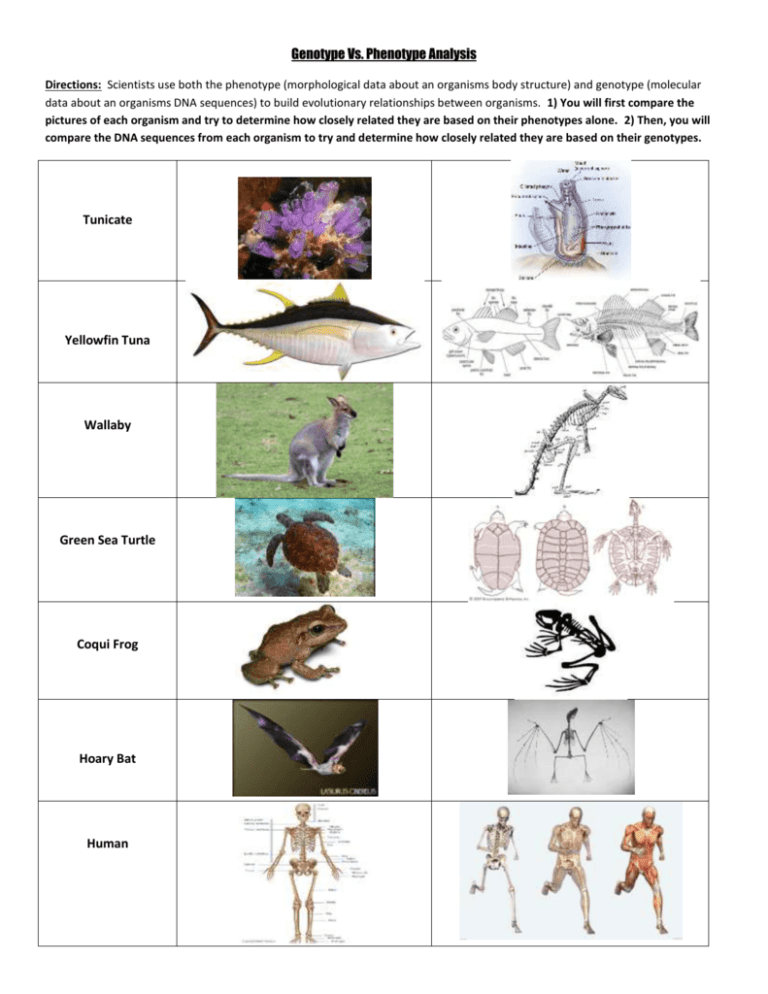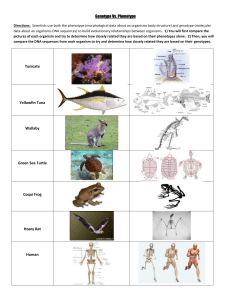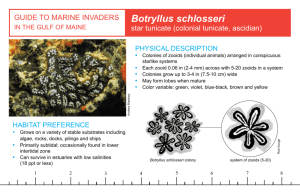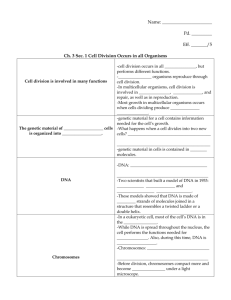Genotype Vs Phenotype Analysis
advertisement

Genotype Vs. Phenotype Analysis Directions: Scientists use both the phenotype (morphological data about an organisms body structure) and genotype (molecular data about an organisms DNA sequences) to build evolutionary relationships between organisms. 1) You will first compare the pictures of each organism and try to determine how closely related they are based on their phenotypes alone. 2) Then, you will compare the DNA sequences from each organism to try and determine how closely related they are based on their genotypes. Tunicate Yellowfin Tuna Wallaby Green Sea Turtle Coqui Frog Hoary Bat Human 1. Based on the images & any background knowledge you may have, which organisms do you feel are the most closely related? EXPLAIN WHY you feel that way. 2. Examine the DNA sequence of each organism and count how many of the gene bases (each letter) are the same as the Tunicate. (So, you are comparing all of them back to the Tunicate!) The first 3 are done for you, so fill in the rest of the column. It might help to highlight common DNA sequences in different colors! Organism Tunicate GTAAGCCGTTTAGCGTTAACGTCCGTAGCTAAGGTCCGTAGC # of genetic bases in common with Tunicate 42 total gene bases Yellowfin Tuna GTAAAATTTTTAGCGTTAATTCATGTAGCTAAGGTCCGTAGC 33 in common GTTTAATTAAAAGCGTTCCTTCATGTAGCTTCCACGCGGCGC 18 in common Wallaby Green Sea Turtle Genotype GTATAATTAAAAGCGTTAATTCATGTAGCTTCCGTCCGGCGC GTAAAATTAAAAGCGTTAATTCATGTAGCTAAGGTCCGGCGC Coqui Frog GTTTAATTAAAAGATTTCCTTCATGTAGCTTCCACGCGGCGC Hoary Bat GTTTAATTAAAAGATTTCCTTCATGTGGCTTCCACGCGGCGC Human 3. Write the organisms in order from most related to least related to the Tunicate. 4. Give one example of two other organisms that show a close relationship. How do you know they are closely related? 5. What are the pros and cons of using only phenotype or genotype to determine how closely related to organisms are? Why is it best to use both?










